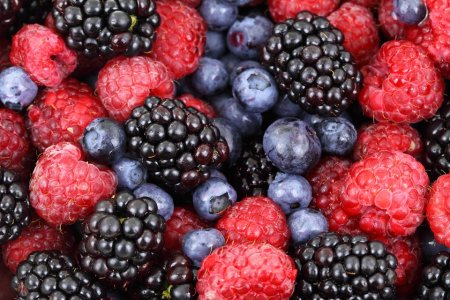Nutrition, Fitness and Lifestyle Choices for Acid Reflux Disease
Nutrition and lifestyle-based treatments for acid reflux disease not only relate to how much one eats, but also when one eats. In addition, cigarette smoking and position of the body while sleeping make a difference. Losing weight, quitting smoking, avoiding late-night eating and elevating the head of the bed are all lifestyle-based treatments that can be useful for treating acid reflux disease. Lifestyle modifications are primarily focused on either reducing pressure on or strengthening the muscle of the lower esophageal sphincter (LES), which is the circular muscle that separates the acid-laden stomach from the esophagus.
Diet
For many people affected by acid reflux, dietary adjustments become one of the most important ways to manage the disease. The primary approach is to avoid foods that contribute to reflux. Since one of the major causes of gastroesophageal reflux is a poorly functioning lower esophageal sphincter (LES), it is often useful to avoid foods that prevent the sphincter from closing properly. Caffeine, chocolate, alcohol, mint, onions and garlic tend to impair LES closing, allowing stomach contents to reflux back into the esophagus and throat. Caffeine and chocolate are particularly serious offenders, as they also increase the amount of acid produced by the stomach.
Other foods that can be helpful to avoid are very acidic foods, such as sugary soda, bottled ice tea, citrus foods and drinks, tomatoes, vinegar and wine (especially white). The acidity of these foods can directly cause inflammation and irritation as they pass through the throat and esophagus on the way to the stomach. The acidity of these foods can also activate pepsin, which is a protein found in the throat, larynx and surrounding structures of some people with laryngopharyngeal reflux disease, or LPRD. Activated pepsin causes injury to the tissues in the area, producing inflammation and worsening of LPRD symptoms.
Despite the above discussion of why some foods and drinks can worsen acid reflux symptoms, many experts do not suggest that they be completely avoided in everyone with reflux. According to guidelines published by the American College of Gastroenterology in 2013, avoiding all foods and drinks that trigger reflux is not recommended for every individual with acid reflux disease. Instead, an individualized approach is suggested, with people avoiding only those items that trigger their symptoms. One problem with this is that symptoms are not always a reliable indicator of reflux. In fact, many people with LPRD do not experience typical symptoms like heartburn.
In addition to avoidance, another dietary strategy to manage acid reflux disease is to neutralize the acidity of certain foods. A good example involves the berry family, such as strawberries, blueberries, raspberries and blackberries. While very healthy, berries are acidic. However, their acidity can be neutralized by adding almond milk and a banana to create a berry smoothie.
Losing Weight
Obesity is a well-known risk factor for developing acid reflux disease, therefore losing weight is an effective way to help manage the condition. Obesity is of particular concern since it has become increasingly common over the past 40 years in parallel with an increased incidence of gastroesophageal reflux disease (GERD).
The primary way that weight loss improves reflux symptoms in obese individuals is by reducing the pressure within the stomach (known as the intragastric pressure). When this pressure is high, it can overcome the force of the LES muscle, thus causing the LES to open and reflux to occur. Reducing intragastric pressure decreases the likelihood of LES opening, and weight loss reduces both reflux symptoms and the amount of time the esophagus is exposed to caustic stomach fluids. Indeed, as reported in a study of 332 overweight or obese adults published in the February 2013 issue of Obesity, the greater the weight loss, the greater the reduction of GERD symptoms.
Avoiding Late-Night Eating
Eating at night shortly before bedtime increases the likelihood that acid and other stomach contents will travel back up into the esophagus. Consuming food or drink increases the amount of stomach contents, which causes the intragastric pressure to rise and increases the chances that it will overpower the LES, causing it to open and reflux to occur. Guidelines published in 2013 by the American College of Gastroenterology recommend that people with GERD avoid meals for two to three hours before bedtime.
Stopping Smoking
Cigarette smoking tends to cause or worsen acid reflux disease in a couple of ways. Smoking relaxes the LES, which predisposes gastric contents to be refluxed back up into the esophagus and throat. Smoking also decreases saliva bicarbonate production. This reduces the saliva’s normal protective function of neutralizing the stomach acid that comes in contact with saliva, especially in the mouth and throat area, but also in the esophagus. Cessation of cigarette smoking therefore does two things that are vital in preventing and treating acid reflux disease. It returns the strength of the LES to normal and restores bicarbonate production in the saliva.
Elevating the Head of the Bed
Hand in hand with avoidance of eating late at night is the importance of elevating the head of the bed when one finally does go to sleep. The 2013 American College of Gastroenterology guidelines recommend that people with GERD elevate the head of the bed when sleeping, especially if they tend to have symptoms at night. Doing this places the upper body in a more upright position, allowing gravity to help keep the stomach contents down. Ways to elevate the head of the bed include using either a wedge under the pillows or placing blocks under the mattress at the head of the bed.



